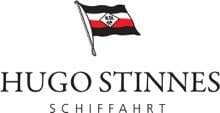Mr. Steffen Wiegratz
Line Manager – SanMex Service
MPP Transatlantic
First of all tell us about yourself Mr. Wiegratz what made you choose a career in shipping in the first place? What do you like about being in shipping primarily? Has the work changed in recent years do you think?
Well, this is a question you should ask people from landlocked countries *smile*. I grew up at the Baltic Sea and from my parents house I had the perfect view to the ferry berths and cargo docks in the Port of Rostock, which is by the way, the biggest port of the German Baltic Area. As a child I could have told you all about the arrivals and departures of all vessels. It seems like this was already an unconscious decision, that one day I would have a leading position in a shipping company.
There are so many aspects of the shipping business that I think make it unique and interesting. Most impressive to me is that – especially in the project shipping sector – every single shipment offers you new tasks and challenges. Our daily work is effected by so many factors, such as weather changes, dock or port worker strikes, low water levels on inland waterways and you always have to adjust to them immediately. All of these obstacles can be challenging, but also quite exciting. This is just a small excerpt, but is representative of the versatility required in a job like this.
I started working at Hugo Stinnes Schiffahrt GmbH (formerly Hugo Stinnes Lines) about 7 years ago. Since those days, when the project shipping market was still suffering from the economic crisis, the balances between ship operators and shippers, with their respective dedicated forwarders, did change a lot. A shipping line needs to act in a very complex and multi-functional manner, without losing focus on its core business – a reliable and financially effective transport solutions. The so-called “everybody-can-ship-everything-mentality” became prevalent and was an indication of the increased direct competition between the different shipping sectors – liner against tramp, container against RoRo and breakbulk carriers. This is one of the most challenging developments in recent times.
Do you accept cargo mainly from freight forwarders or is it a mix of both shippers direct and freight forwarders?
The importance of direct links between shippers and shipping lines has increased massively. Nevertheless, the classic role of freight forwarders and their expertise in transport planning should not be neglected. Risk assessment and information filtration is one of their tasks – making the communication between cargo and ship easier of course, compared to a straight connection between producers and shipping lines. In my opinion, some cargoes and projects can cope with the absence of a forwarder eventually, but most of them cannot.

We understand that you are the line manager of the SanMex service. Explain this service concept to our readers please and tell us what you find unique about this particular service in the market. Elaborate also with a few lines on the history of Stinnes Line.
The SanMex service is a modern, flexible, but very experienced multipurpose liner service. Our team is situated in Rostock, responsible for the planning and performance of sailings with a minimum monthly frequency. The trade is designed as a round-service between selected North Sea ports (Bremen and Antwerp), North Spanish ports (Bilbao, Pasajes, Aviles/Gijon) and destinations in the Gulf of Mexico (Veracruz, Altamira/Tampico, Houston, New Orleans) and has been in the transatlantic liner market for more than sixty-five years. The company roots itself back into the first half of the 19th century – Mr. Hugo Stinnes was one of the most important entrepreneurs German industrial and transport history.
In the current market it is very important to have special focuses. The SanMex Service offers a wide range of cargo shipments in general, but has its special focus on supply-chain-logistics for the renewable energy and automotive sector, as well as the construction and building industry. Carrying ultra-sensitive steel and oversize machinery for the factories of famous car producers, like Volkswagen, Audi and Nissan.
Furthermore we are proving to be a reliable partner for a large number of windmill and electricity equipment customers. Two significant examples: A global player in the windmill business chose Stinnes as their test partner for a new windmill blade stacking system.
Another one has maintained a long-term relationship with us for over a decade, since the steady shipments of renewables from Spain to Mexico started.
What type of ships do you currently employ and are your ships geared or non geared? If geared, what kind of capacity can you offer with own gear? With a base in Rostock does it also mean that your ships call the Baltic on occasion? Are your ships ice-classed?
The operated tonnage are craned tweendeck vessels of the modern generation with capacities between 12 and 34.000 tdw, equipped for the carriage of sensitive steel materials as well as loadings of over-length and heavy-weight cargoes. The geared vessels have the option to handle cargoes up to 300mt.
The Baltic Sea is an interesting area for project cargo shipments, indeed. Just one example: A famous mobile crane producer (the one with L…) is exporting complex and voluminous crane equipment from the factory, which is situated in the Port of Rostock.
With the detailed planning, a small alteration on the flexible sailing schedule and the right cargo for the right moment – we fixed a nice shipment into Altamira/Mexico. Looking back, this was by far the shortest visit on board of a vessel loading own cargo.
Since it was such a good experience, it was for sure not the last time and opportunity for interesting fixtures out of the Baltic.

Steffen Wiegratz on board M/V Alamosborg alongside the Liebherr Factory Quay in Rostock, Germany where we loaded two Harbour Mobile cranes for Mexico (December 2016)
Can you provide containers or are you mainly a breakbulk shipowner? Do you accept shippers own units?
I must admit that I stopped counting how many clients asked this important question, but all of them get the same feedback. The SanMex Service is focused on shipments of packed or unpacked shipments of project cargoes, but if you just think about all the small accessory components, e.g., bolts, nuts or even paint colors accompanying the project shipments, a combined solution for container transports, both shippers own units or line’s containers on the same vessels are an advantage, of course. Thanks to our exclusive container fleet with all typical equipment types (DC, HC, OT, platforms) – we can cover this demand as well and assist to avoid red tape and additional workload for our customers.
Can inland transport in Mexico be done via your arrangement all the way to the final destination?
Yes, of course. This is what I meant talking about the changes in the shipping roles in recent years. Hugo Stinnes maintains a long-term relationship with all parts of the transport chain. Our network of partners in Mexico combine reliable terminals for cargo handling in all relevant ports on the one hand, but also act as logistics partners for all kinds of haulages, over-length, heavy-weight as well as standard jobs.
Would you be able to call other ports sub-inducement in case of bigger projects destined for non-regular ports of call? Roughly speaking, what would constitute enough “inducement” for you to make such a call?
In describing the service with the word ‘flexible’, it suggests an option to include other ports in the same trading area or designing special service sailings to fit the requirements of the requesting client. Most important is, that the flexibility remains in a healthy balance. We want to keep short transit times and a solid service structure on the trade-lane to ensure a steady cargo flow. But we are definitely also considering niche solutions for customers with special demands. Defining an exact number for an inducement would not be constructive at this point, but our company can ensure small inducements due to “handy” vessel sizes, different stowage options and long-terms price structures in most of the area ports.

Ethilen-Boiler shipment (237mt)
Has the slump in the oil and gas industry affected your liftings to Mexico and the Caribbean?
Yes, of course!! We noted a drastic decrease in the number of projects and volumes since the trend started and had to adjust our tonnage and sailing strategy. On the other hand I am very optimistic that the oil & gas sector will have its revival very soon – project shipping will see positive trends again!
Whom to contact for rates to Mexico/Caribbean? Whom to contact for rates from Mexico & Caribbean?
The pricing and strategic work on sea-freight and logistics services for the whole service is controlled at the Stinnes HQ in Rostock. In almost all countries (Germany, Belgium, Spain, Mexico, USA, etc.) we have exclusive or company integrated agencies representing, promoting and supporting the sailings of the SanMex service with their bookings. Many of them belong to well-known agency networks, such as Multiport or others. For more details on contact partners at sight, we strongly suggest to visit our website to find all the relevant counterparts in the corresponding countries and to get in touch with us.
 Interviewee
Interviewee
Steffen Wiegratz
Line Manager – SanMex Service
MPP Transatlantic
wiegratz@stinnes-linien.de
Hugo Stinnes Schiffahrt Gmbh
http://www.stinnes-linien.de/

